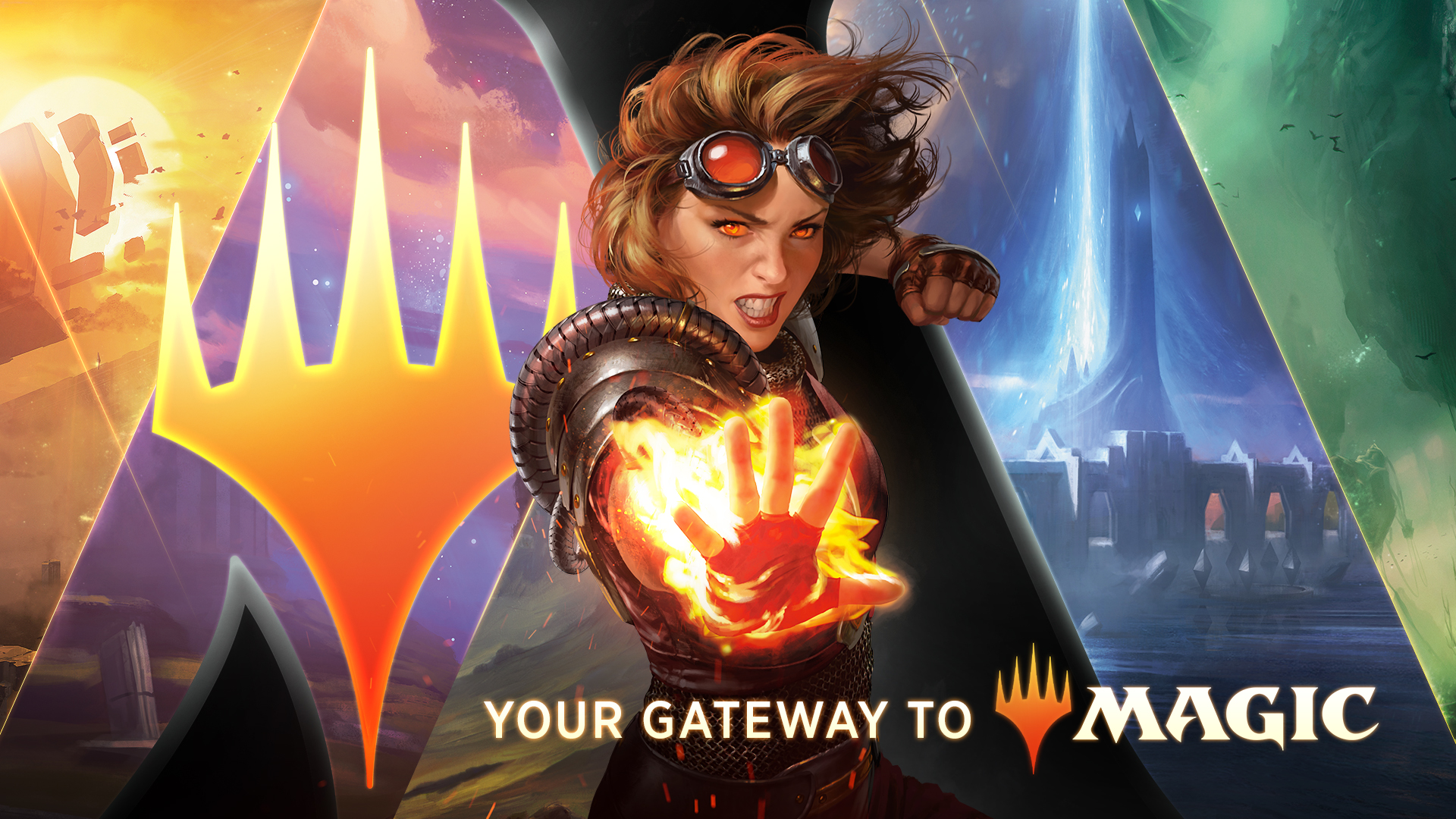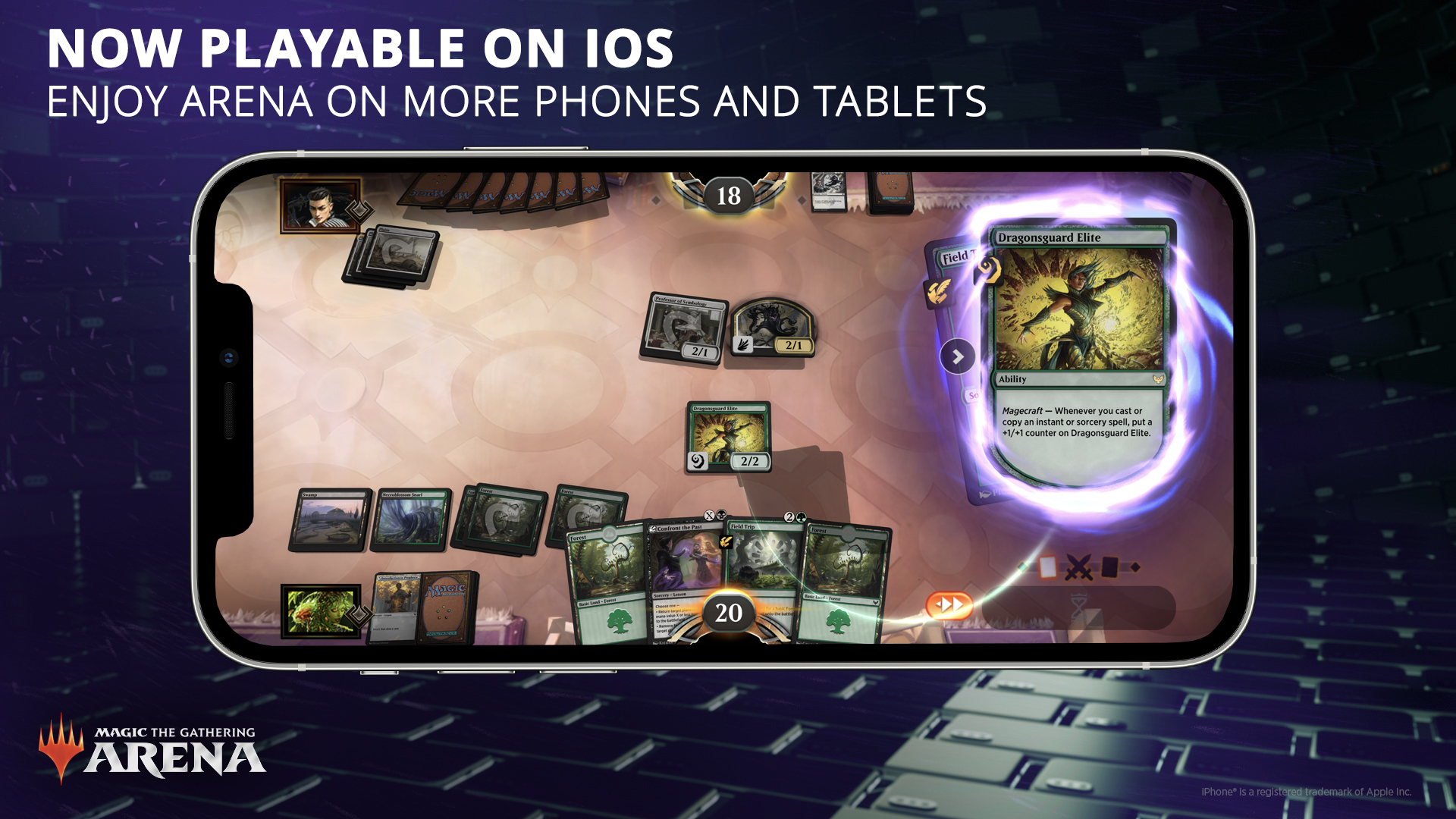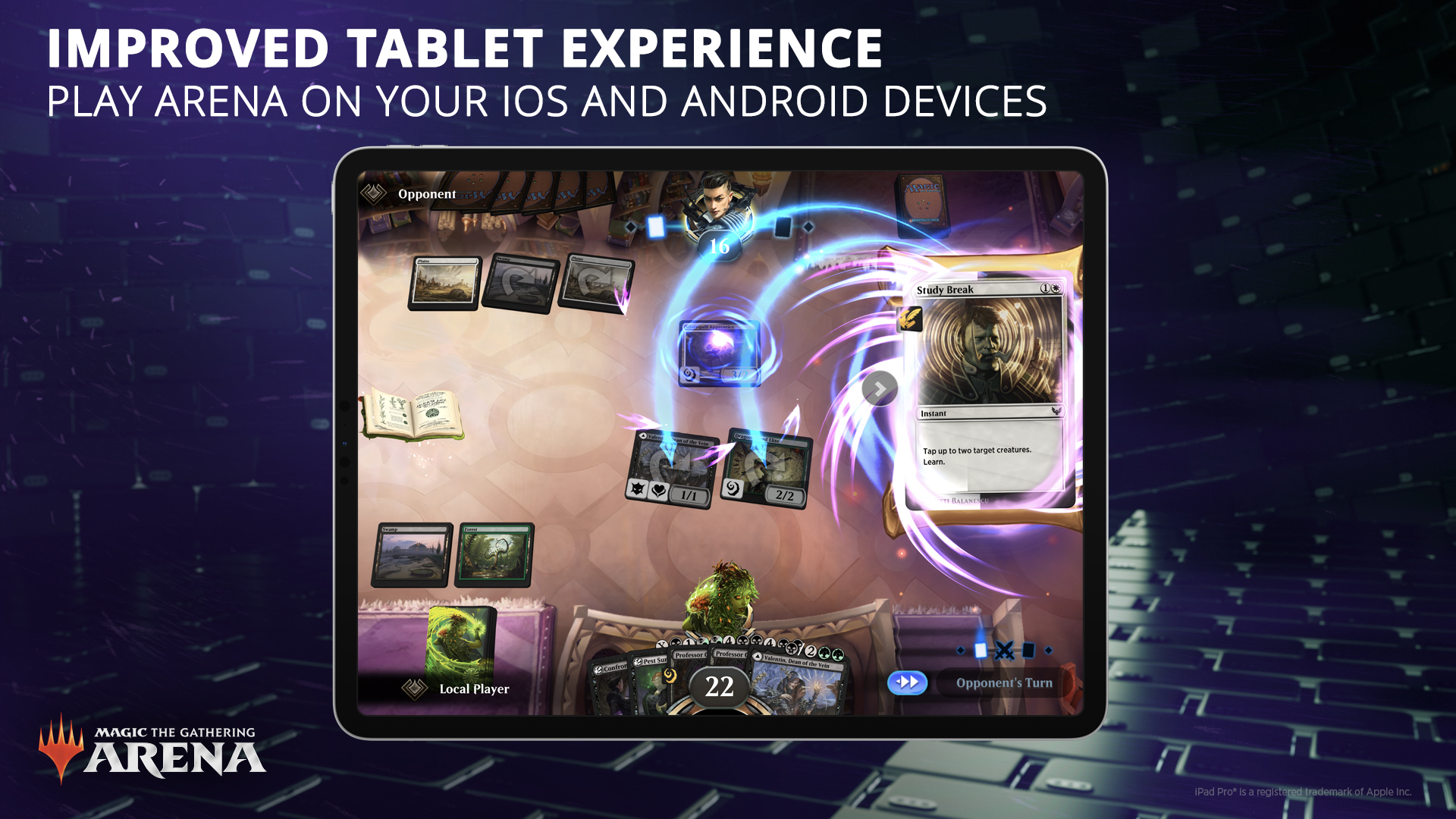Now’s the ideal time to dive into Magic: The Gathering Arena — here’s why

Since its original launch way back in 1993, collectable card-game phenomenon Magic: The Gathering (MTG) has explored digital editions on numerous occasions, but it wasn’t until the arrival of Magic: The Gathering Arena in 2017 that the devs at Wizards of the Coast found the ideal digital format for the title—one combining the beauty of the card game with the convenience and flair of an online and always-available digital experience. The only caveat: it was still only available when you were sitting at your PC... until now.
With the arrival of Arena for iOS and Android, it's the perfect time to dive into the game, whether for the first time or to start getting deeper into what digital Magic has to offer. There’s nothing ‘dumbed down’ about Arena either, with almost all cards from every physical set since that 2017 beta launch integrated into the digital game. Whether it’s tokens, counters, Sagas or Parties, even the most complex modern interactions are represented seamlessly, making it often the easiest way to learn how new keywords and concepts work before you play the latest arrivals with your physical decks.
Magic at your fingertips, anytime and anywhere

Arena’s launch on mobile devices is exactly what fans have been hoping for—everything you own on the PC edition is right here in your Arena mobile account, and all progress flows across both versions of the game. Arena on mobile just gives you more ways to play, more often – which also means you’re likely to bump into your friends more often, too.
If you’ve never played, Arena is a generous title that gives you a lot of free cards and decks via its system of daily quests, which you complete by playing cards of certain colours or just casting spells in game. And with the new mobile editions, you’ve got even easier access to stay on top of your dailies and earn more cards, more decks and more free packs.
A grand introduction

There’s also a fantastic introductory experience in Arena, sending you on a journey through the various colours of the game. Even if you have never played a single card of Magic before, this intro is a great way to learn the ropes on what each of the game’s five colours represents and how they play against each other. And of course, there’s yet more free cards to be gained by playing through this introduction. Once you’ve finished, you’ll get access to all the modes Arena has to offer—Limited, Standard, Historic and Brawl.
In Arena, you also earn wildcards of various card rarities. Each wild can be cashed in for a specific card of that rarity value to help you build out exactly the deck you want. You can get wildcards directly when you open card packs, but you’ll also gain credit toward more wildcards for every pack, so you’re always on your way to earning more to use.
And you never need to worry about not owning all the cards either. Aside from wildcards, formats like Limited ensure you don’t have to own lots of cards to be competitive. Here, you draft cards from packs you open just for that series of matches alongside everyone else, making it more about your deck building skills, rather than your raw card collection. You can also keep the cards you draft to add to your overall collection, making Limited a rewarding format for players who want to play and collect cards at the same time.
Quick tips for getting ahead – fast

If that still sounds a little daunting, don’t fret – we’ve put together a quick set of tips to help you dive into Arena and having a great experience:
- Clear the full introduction. There’s no shame in switching things up here and there when you first dive into Arena, and you can jump into general Standard games quickly if you want. But a lot of bonus cards and decks are tied up in the Introductory quest lines, with further modes opening up once these are complete. So make sure and power through that experience to get access to everything Arena has to offer.
- Watch those daily quests. Ticking the boxes on your daily quests earns you a lot of currency and bonus decks, so make sure you keep chipping away at these alongside your wider Arena play. Often, with the right choice of deck you can clear two quests at once too, so get smart and get rewarded.
- Check the deals. In the Arena store, there are always special deals on, and these change up regularly. From virtual card sleeves to pets to alternate card art and, of course, specials on card packs, some of the deals offer deep discounts you don’t want to miss.
- Track down your friends. Magic is always at its best with friends, so ask around and get your mates on your Arena friend list so you can play together. The official iOS launch on March 25th should see more people ready for action—and available more often than ever before.
- Search for freebies. Wizards of the Coast releases special free codes online with every set release (and sometimes just for kicks), so it pays to search around now and then to see if there are any codes to redeem for free packs. For example, you can use the code PlayKaldheim to get three packs from the last set release! You’ll find the Redeem Code box in the Store section of the MTG Arena app.
Magic: The Gathering Arena is available on PC, Mac, Android and iOS. To find our more, follow the links below:
- Website: Download Now and Play Free | Magic: The Gathering Arena (wizards.com)
- Twitch: Magic - Twitch
- YouTube: Magic: The Gathering - YouTube
- Facebook: Magic: The Gathering | Facebook
- Instagram: Magic: The Gathering (@wizards_magic)
- Twitter: Magic: The Gathering (@wizards_magic) / Twitter
Bonus Q&A with WotC’s Chris Cao
As part of the research for this piece, we spoke to WotC Executive Producer Chris Cao about bringing Arena to mobile platforms. As a special bonus for Magic fans, we’ve included an edited selection of that interview below.
Q: What was the biggest challenge in getting a mobile version into our hands?
A: The biggest challenge is the one we set for ourselves: the ability to play authentic MTG on your mobile device. This translated into dozens of smaller challenges like managing screen real estate, adapting game cues so they were readable, and even rebuilding a lot of the core UX for mobile play. Through it all, we made the choices that kept authenticity intact. Just like in tabletop, you can have 100 goblins running around, and, no, it isn’t always pretty. But it’s fun to play and it’s what it takes to make Magic mobile.
Q: Are there any examples of card interactions that are challenging in a touch environment?
A: In a game with near-infinite, player-created combinations? Yes, we had a few. MTG is a game of edge cases, and Scute Swarms (a card that makes A LOT of itself) loved to destroy mobile performance. In that case, we put very high limits on the near-infinite nature of MTG, but we were careful to set those limits at appropriately absurd levels to keep as many games as authentic as possible.
Q: Did any areas of the game get a redesign for mobile, whether card management or deck building or other areas?
A: Though we included some slight variations, we felt the existing card management systems were intuitive enough to be ported to mobile devices. There is a re-emphasized zoom feature during play, which players can do by hovering their fingers over cards. That is a little more prominent on mobile and it allows for visual information to be displayed more clearly on smaller screens.
Q: Any strategies you like to follow in how you use the wildcards you earn?
A: Generally, I like to use my rarer wildcards on consistent deck staples, such as rare dual lands. This way, you feel like you’re getting a lot of value for one wildcard redemption, since you can use it in lots of different deck types. Once you start building out the staples, you can start crafting more niche cards, like tribal synergies. I would also suggest focusing on one deck and improving it over time, rather than attempting to build out a bunch of different decks that you might not have the strongest cards for.
Keep up to date with the most important stories and the best deals, as picked by the PC Gamer team.

